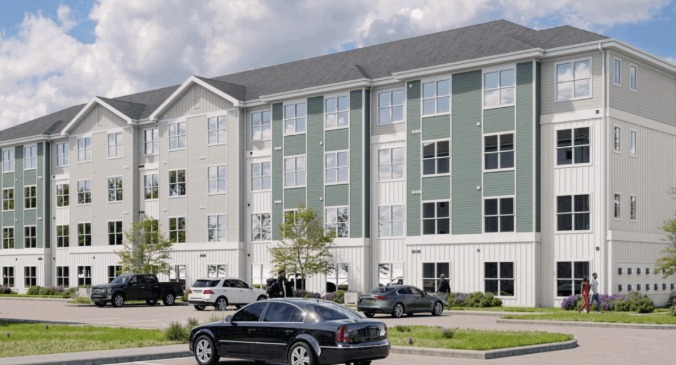“During the ‘tech wreck,’ many corporate housing providers began giving us apartments back, which put additional pressure on our occupancy at a time of deteriorating market fundamentals,” said Leo Horey, Executive VP of Operations at AvalonBay Communities, the nation’s fourth largest apartment REIT, with more than 50,000 apartments in 178 communities located in high-barrier-to-entry markets in the Northeast, Mid-Atlantic, Midwest, Pacific Northwest, and in Northern and Southern California. To guard against a similar scenario, AvalonBay entered the current recession with an occupancy target of around 96 percent and less exposure to furnished units and short-term leases across its stabilized portfolio.
As of Q3 2008, AvalonBay had decreased the percentage of corporate and month-to-month leases in its stabilized portfolio to the three-percent range from approximately five percent year-over-year, and has scaled down that number even further since.
Reducing volatility
“During the last downturn, when our exposure to corporate housing was in the high-single digits, we learned that those people all can move out at once. When that happens during a time when you tend to have more vacancies, such as the slower holiday season between mid-November to mid-January, relying on renter demand for furnished apartment homes can expose you to short-term volatility. Even in a normal year, the occupancy of furnished apartment homes is much more volatile. In a down economy, when a CEO may decide to reduce consultants or contract workers, those corporate apartments are the first to go,” said Horey.
“Apartment REITs have always had a lower tolerance for risk with corporate units, typically around 10 to 20 percent on average,” said Dave Caple, president and CEO of Seattle-based corporate housing provider Aboda, who also serves as president of the Corporate Housing Providers Association (CHPA).
“And most of that is driven off financing and what their lenders and investors might deem appropriate risk, although the vast majority of us are very sound businesses. But, if you have all your eggs in one basket and that basket goes away, it can have a quick detrimental effect on your overall performance. So we have always been limited in most of these REITs’ apartment communities,” he said.
The price of turnover
Vacancies, the most costly expense for apartment owners, can very quickly turn a profitable investment asset into a liability. Besides the loss of rent are the costs to replace or clean carpet, repair appliances and paint to prepare vacant units for the next tenant, as well as marketing and advertising to attract new renters.
According to Horey, the cost to prepare a vacant AvalonBay apartment for a new tenant typically is around $400, an amount derived by taking the actual redecorating cost and dividing it by the number of turns.
But the REIT’s total cost of turnover per unit actually runs four to five times more, as much as $2,000, when taking into consideration the salaries of leasing associates, revenue loss and all other aspects connected with the process.
AvalonBay’s typical annualized turnover is around 58 percent, meaning the typical resident remains at a community for 21 or 22 months. By comparison, a typical furnished apartment home resident stays between 75 days and 90 days. Horey noted that when someone stays 21 or 22 months there is a lot more wear and tear to an apartment so that the process of turning or redecorating an apartment is probably more extensive, “but when you are looking at a furnished apartment home lease that is going to be one sixth or one eighth of the time that a typical unfurnished apartment home lease would be, the costs associated with short-term leases, or with furnished apartments homes, are significantly more,” said Horey.
Exception to the rule
AvalonBay prefers to lease apartments on an unfurnished basis and establish a rent level to maintain targeted occupancies, but plans to keep a small percentage of furnished apartment homes across its portfolio, managed either in-house or by a third-party.
“The executives that operate each of our regions have guidelines that they need to operate the portfolio under and only in unique situations might it vary. What would be a unique situation? If you have a property in a central business district right near mass transportation, there might be a compelling reason to adjust the amount of furnished apartment homes in that specific property, but overall, if you were to see our region-to-region numbers, they are very consistent,” said Horey.
He noted there are other times when it might make sense to increase the number of corporate and month-to-month leases. “Let’s say you were leasing up a brand new unoccupied apartment community and you were going to get a lot of newly completed apartments all at once because of the way the building’s occupancy certificates had to be issued by the local jurisdiction. There might be a rationale to take some short- term leases to meet the needs of a company. It would help us by spreading out the rate at which you were receiving the new apartment homes,” he said.
Managing lease terms
As furnished apartments become vacant at AvalonBay communities they are returned to the unfurnished pool. Renters may still lease a furnished unit, sign a short-term lease or renew month-to-month, but they will pay a premium to do so, based on seasonality and the added costs to re-lease the unit.
Those calculations are features of the revenue management software that AvalonBay is deploying across 50 to 55 communities this year. “In 2009 we will have about a third of the portfolio deployed on a revenue management platform with the expectation that the remainder of the portfolio will be deployed in 2010,” said Horey.
The REIT piloted the two leading revenue management programs over an extended period of time and chose one last year. Horey expects the program will help the company offset the risk of a shorter lease terms, if residents request them.
“That’s something we evaluated when we were looking at the revenue management programs. What I can tell you about them is that they do consider all the costs. They consider the cost of turnover and they price apartment homes accordingly, based on the cost that would be incurred in the turnover process. They also consider seasonality issues, which speak to how it might be more difficult to lease an apartment in the winter compared to the summer.
“We see the majority of our traffic occurring in the second and third quarters whereas the first and fourth quarters are slower periods. So if you were to see the pricing from a revenue management software package, what it would give you is pricing for one month, two months, three months, etc., and the shorter the duration, the higher the price might be. So it does price in some of the costs and the premiums that exist out there, and what it is trying to do is find the proper balance so that you are not taking on disproportionate costs.
“One of the things we really like about the revenue management software is it gives us the ability to say yes to any prospect, but there is a price assigned to that request and if the prospect is willing to pay that price then we are comfortable leasing it to them for that duration,” said Horey.
















